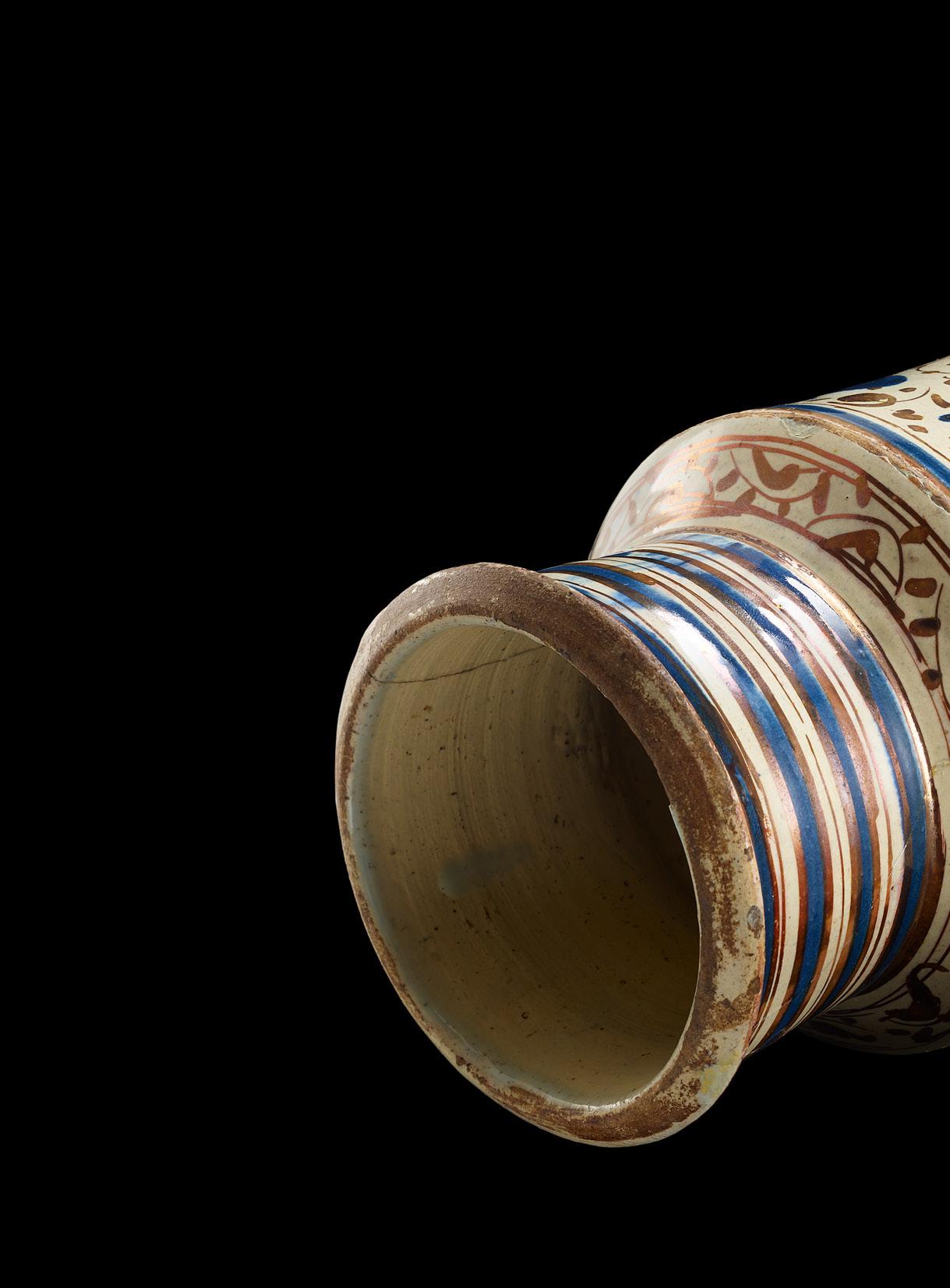
3 minute read
04 Virgin and Child
from JB Test 01/22
VIRGIN AND CHILD
Probably Bohemia or Franconia Second quarter of the 14th century
Advertisement
Linden wood with polychromy and gilding Height: 96 cm
Provenance: Collection Konrad Nolte, Germany, Delbrück.
Related literature: Karl IV. Kaiser von Gottes Gnaden. Kunst und Repräsentation des Hauses Luxemburg 1310-1437, exh. cat. Prague 2006, Munich/Berlin 2006. The Virgin Mary and the Christ Child, held in the crook of his mother’s left arm, look serenely at the viewer. The sculpture, resting on a plinth, has been carved in the round. The upper body of the Mother of God has a pronounced curve, the ‘S’ shape resulting from the baby Jesus being positioned above the Virgin’s supporting leg. The Christ Child, sitting upright and swathed in gold, would originally have been stretching out his hand – that has since been lost – to the faithful in the manner of a New Adam. His mother is clad in a golden, blue-lined robe that lies close to her upper body; from her hips downwards the material falls to the ground in rich folds. Her head is covered with a large, white veil or maphorion, decorated with ribbons edged in red and originally held in place by a crown that is now missing.
The Madonna and Child is probably Franconian or Bohemian and is strongly modelled on French sculpture, as explained in an expertise by Dr. Markus Hörsch1 who references the Madonna and Child formerly in the Dominkanerinnenkloster St-Louis in Poissy and today in the Museum Mayer van den Bergh in Anwerp.2 However our Madonna is later than the Madonna from Poissy, that dates from 1300, and its style can be compared with other figures of the Virgin Mary, based on French prototypes and created in Franconia around 1340/50, probably by a French sculptor. In this connection a comparision can be made to two stone sculptures that were created around 1340/50 in Franconia for the Ursuline Convent of the Annunciation in Würzburg3 and the so-called House Madonna of Nordheim/Main,4 probably made for a church in Würzburg. Hörsch mentions another central work with respect to the development of later so-called ‘Beautiful Madonnas’ (cf. cat. no. 6) – the Prague Madonna.
04
1 Expertise by Dr. Markus Hörsch, 22.02.2015 2 Illustrated in exh. cat. Prague 2006, op. cit., p. 104, cat. no. 18.1. 3 Ibid, p. 106, ill. cat. no. 19.1. 4 Ibid, p. 104-05, cat. no. 19, illustrated

‘Our Lady of the Old Town Hall’ (or ‘Old Town Hall Madonna’)5 of around 1356/57 is of an advanced style that goes beyond that of the Würzburg Madonna. Hörsch describes our Madonna as a ‘masterpiece made in Southern Germany’ that, although still closely modelled on works produced in France, reflects this new fashion that excels the Würzberg examples already mentioned. This style of Madonna, characterised by its softly modelled lines and pronounced hips, spread in the course of the third quarter of the 14th century throughout Bohemia and the whole of the Holy Roman Empire. It originated at the court of Charles IV as an expression of his imperial representational needs and had a major influence on European art over the following decades.6 This Madonna reveals the first stylistic responses to the new so-called ‘Beautiful Style’ in Prague, making it difficult to determine whether it was created in Prague/Bohemia or in Franconia.
04
6 Markus Hörsch, ‘Der Aufstieg des Hauses Luxemburg. Vielfalt der Anfänge künstlerischer Repräsentation’, in: exh. cat., Prague 2006, op. cit., p. 25ff.2008). 5 Ibid, p. 105-07, cat. no. 20, illustrated


Hispano-Moreque Albarello

05













